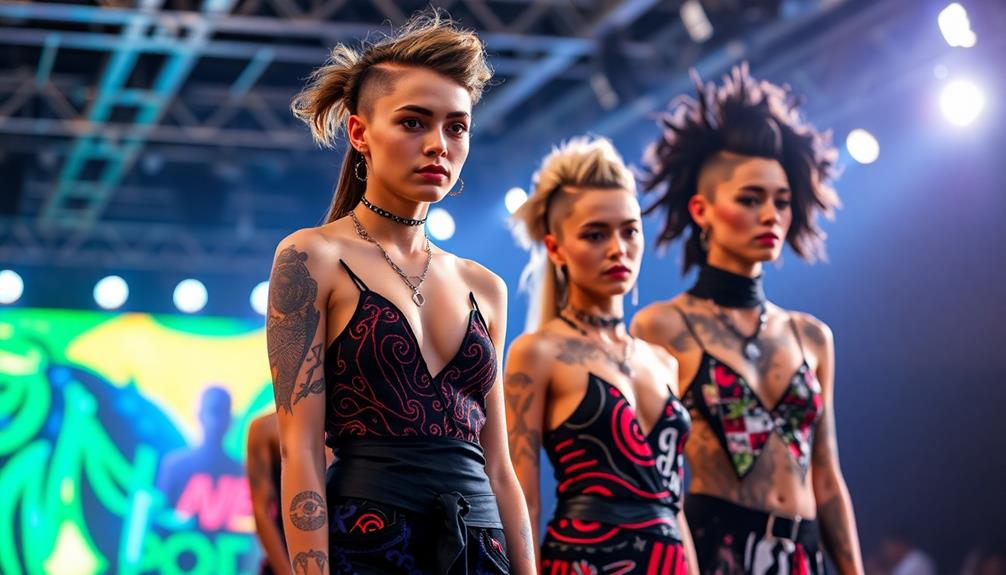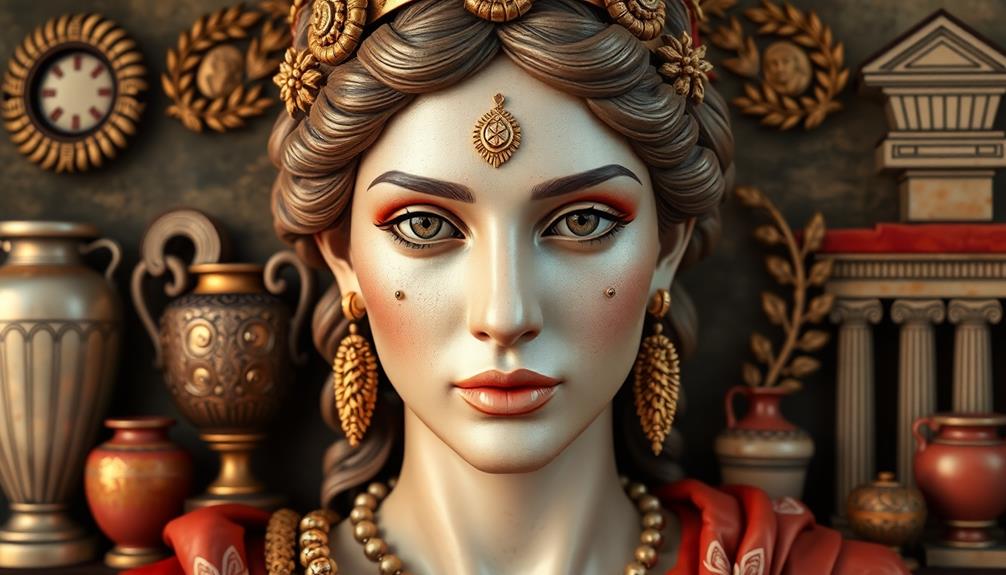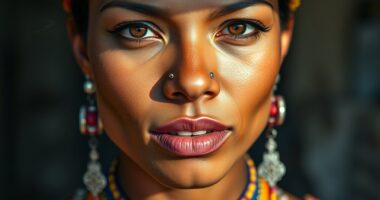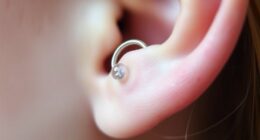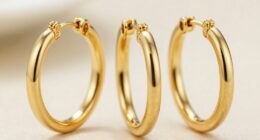Body piercing's influence on modern fashion design is undeniable. Designers like Louis Vuitton showcase models with piercings, emphasizing individuality and self-expression. As societal acceptance grows, piercings have shifted from being niche to mainstream fashion statements. Celebrities and social media influencers play a pivotal role in popularizing these trends, making body art a staple on runways and in everyday wear. Multi-piercing configurations challenge traditional beauty norms, while bespoke jewelry designs allow for personalized styles. The future holds even more exciting trends in how fashion and body piercing intersect, inviting you to explore this dynamic relationship further.
Key Takeaways
- Body piercings have transitioned from cultural markers to mainstream fashion elements, influencing designer choices in contemporary collections.
- Celebrities and social media influencers play a significant role in popularizing diverse piercing styles in modern fashion.
- Fashion runways increasingly showcase models with various piercings, challenging conventional beauty standards and promoting self-expression.
- Body piercings are now considered essential fashion accessories, inspiring specialized jewelry designs and multi-piercing configurations.
- Health and safety in piercing practices are crucial, prompting a focus on professional standards and biocompatible materials in fashion-related body art.
Historical Significance of Body Piercing
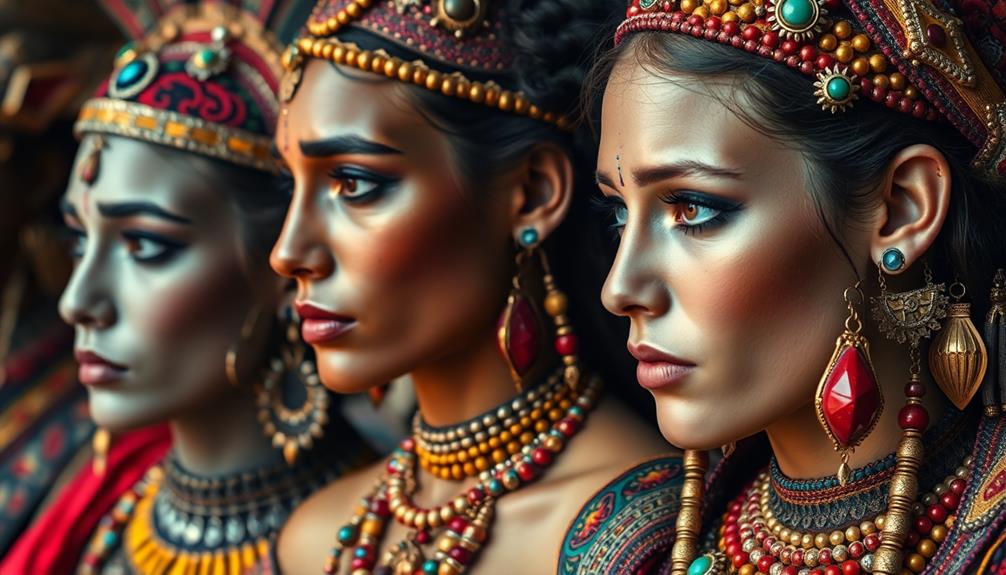
Body piercing has a rich historical significance that spans thousands of years, serving various cultural purposes around the globe. In ancient civilizations like Egypt and among African tribes, body piercings often marked rites of passage, religious devotion, or indicated social status. These practices weren't just for aesthetics; they held deep meaning within their respective cultures.
In contrast, in modern contexts, the perception of body piercings has shifted dramatically. For instance, in North Korea, piercings symbolize capitalism and are strictly forbidden, while in Iran, they can lead to severe consequences, especially for women. This illustrates how cultural purposes can dictate the acceptance or rejection of body piercings, highlighting their historical significance.
The evolution of body piercings from ancient traditions to contemporary fashion began in the 1960s and 1970s, influenced by countercultural movements. The opening of the first professional piercing studio in the U.S. in 1978 marked a pivotal moment, shifting body piercings from a marginalized practice to a mainstream fashion choice.
Today, designers embrace models with visible piercings, reflecting the evolving attitudes toward this age-old practice.
Body Piercing as Self-Expression
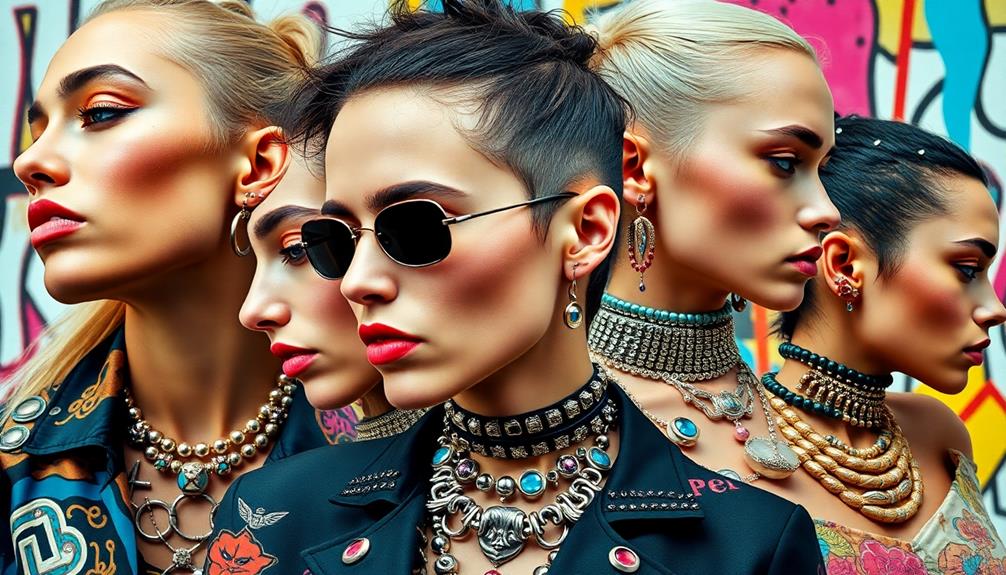
Piercing serves as a powerful form of self-expression, letting you showcase your unique personality and style. Body piercings, like septum, tragus, and helix, allow you to convey your individuality in ways that resonate with your inner self.
As society shifts to embrace these forms of self-adornment, your fashion choices reflect a growing acceptance of piercings that were once considered taboo.
Thanks to popular culture, including celebrities and social media influencers, body piercings have become celebrated elements of personal style. You may find inspiration in the diverse piercing configurations that others sport, encouraging you to explore unique combinations that enhance your aesthetic.
This trend highlights a desire for customization, allowing you to craft a look that truly represents who you are.
Moreover, piercings act as statements of empowerment, enabling you to challenge societal norms and assert your autonomy over your body. By choosing to adorn yourself with specific body piercings, you're not just making a fashion statement; you're also expressing your values and beliefs.
Ultimately, body piercing is a vibrant canvas for you to paint your individuality and express your authentic self.
Modern Fashion Trends and Piercings
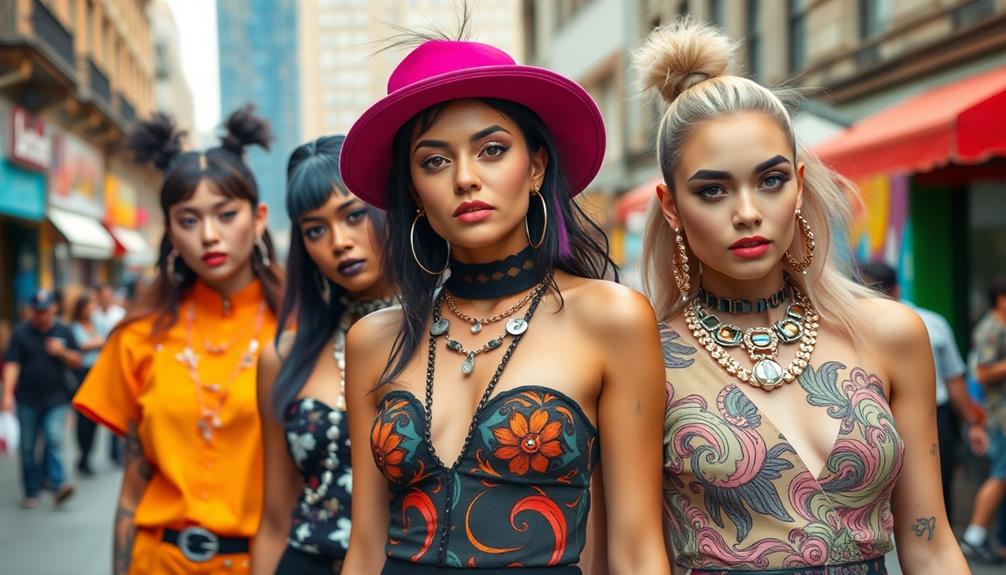
Modern fashion trends are redefining how you view piercings, with runway shows from designers like Louis Vuitton showcasing bold styles that embrace individuality.
Celebrities are influencing your choices by popularizing various piercing trends, making them a staple in everyday fashion.
As you explore these trends, consider the cultural significance behind each piercing and how it reflects your personal style.
Piercing Trends in Runways
Fashion runways today showcase a vibrant blend of creativity and individuality, with body piercings becoming a focal point in many designer collections. Designers like Louis Vuitton and Givenchy are leading the charge, featuring models adorned with septum and lip piercings, which highlight how piercings can serve as a compelling fashion statement.
As you watch the latest collections, you'll notice a shift towards embracing body modifications. The resurgence of modern piercing trends reflects a growing appreciation for diverse styles, moving beyond traditional earlobe piercings to include helix, tragus, and industrial piercings.
This evolution not only enhances the overall aesthetics of the outfits but also challenges conventional beauty standards.
Fashion weeks consistently present models sporting a variety of piercing configurations, reinforcing the idea that these body modifications can elevate high-fashion looks. The integration of body art into fashion design signifies a cultural shift, where piercings are celebrated as an essential aspect of modern fashion aesthetics.
Celebrity Influence on Styles
A significant force in shaping today's piercing trends is the influence of celebrities and their unique styles. Icons like Britney Spears and Christina Aguilera popularized piercings in the early 2000s, turning them into essential fashion accessories. Their bold choices made body art widely accepted and desirable, encouraging you to explore your own personal style.
As individuals seek to enhance their expression of identity, the concept of living in abundance through body art becomes increasingly relevant.
In the 1990s, top models showcased discreet body piercings, setting trends that led high-fashion designers, including Louis Vuitton and Givenchy, to incorporate these elements into their collections. The Y2K aesthetic embraced piercings as a key component of identity, allowing you to express your individuality through your body art.
Today, social media influencers play a significant role in driving current piercing trends. They showcase their unique styles, making body adornment a considerable part of modern fashion.
Additionally, the rise of male piercings, inspired by pop-punk bands and male celebrities, has broadened acceptance and showcased diverse piercing styles. This celebrity influence on fashion trends encourages everyone to experiment with body art, making it an essential aspect of contemporary personal expression.
Cultural Significance of Piercings
Increasingly, piercings have become a significant expression of personal identity and cultural importance in today's society. Modern fashion trends embrace piercings as essential elements of self-expression and individuality. Designers like Louis Vuitton and Givenchy showcase septum and lip piercings in their runway collections, signaling that these adornments are now considered fashionable accessories.
With the rise of social media influencers, the cultural importance of piercings has amplified, encouraging more people to experiment with diverse styles. You'll notice that piercings are no longer confined to traditional locations; avant-garde options, such as microdermal piercings, reflect evolving fashion aesthetics and personal expression.
High-fashion models flaunt body piercings, challenging conventional beauty standards and reinforcing the idea that piercings can enhance one's style. This blending of body art and fashion has even inspired specialized clothing lines designed to accentuate various piercing styles, promoting a culture where individuality thrives.
As you explore modern fashion, it's clear that body piercings have transformed from mere trends into powerful symbols of self-identity and cultural importance, encouraging you to embrace and celebrate your unique style.
The Impact of Celebrities on Piercing Culture

Celebrities have undeniably shaped the landscape of body piercing culture, making it a prominent aspect of contemporary fashion. Icons like Britney Spears and Christina Aguilera brought body piercings into the limelight in the early 2000s, encouraging widespread acceptance and transforming them into trendy accessories. You've likely noticed how top models in the 1990s showcased discreet body piercings on runways, challenging conventional beauty standards and elevating their status in high fashion.
Today, social media influencers play a pivotal role in shaping public perception of piercings. Their unique styles promote self-expression, making body piercings a must-have in modern wardrobes. Celebrities frequently collaborate with jewelry designers to create exclusive collections, setting trends that resonate with fans.
Here's a quick overview of how celebrities influence piercing culture:
| Celebrity | Influence on Piercing Culture | Notable Trends |
|---|---|---|
| Britney Spears | Popularized piercings in mainstream fashion | Nostalgic 2000s styles |
| Models in 90s | Elevated piercings in high fashion | Discreet styles |
| Social Media Influencers | Showcased unique piercing styles | Customization and self-expression |
This fusion of celebrity influence and body piercings continues to redefine fashion trends.
Piercing Styles in Contemporary Design
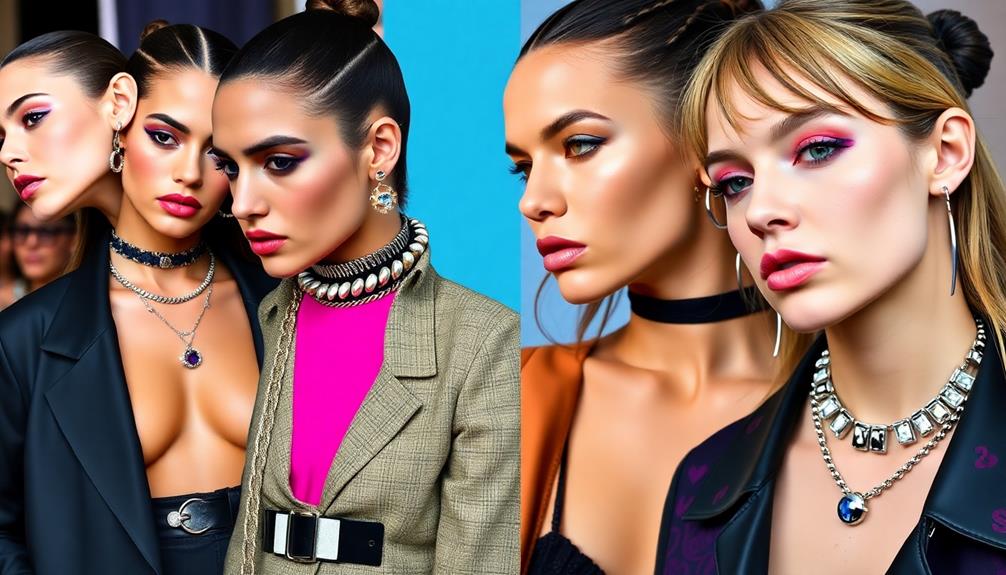
Body piercings have become a dynamic element in contemporary fashion design, with styles like septum and helix piercings gaining popularity on runways and in everyday wear. Fashion designers increasingly embrace these piercing styles, challenging traditional beauty standards and celebrating self-expression.
High-profile shows have showcased models flaunting visible piercings, which has elevated body art's status in modern aesthetics. This trend has led to a surge in the popularity of multi-piercing configurations, inspiring accessory designers to create specialized jewelry that complements various styles of body piercings.
You might envision:
- Dainty hoops adorning a delicate helix
- Bold septum rings making a statement
- Layered studs enhancing an ear's visual narrative
Influential celebrities and social media have played a significant role in popularizing piercing trends, making them widely accepted in everyday fashion.
Today, piercings are viewed as essential fashion accessories, seamlessly integrated into collections to enhance overall visual impact. As you explore contemporary designs, you'll notice how self-expression through piercing styles continues to shape the fashion landscape, allowing individuals to showcase their unique personalities and aesthetics.
Health and Safety Considerations
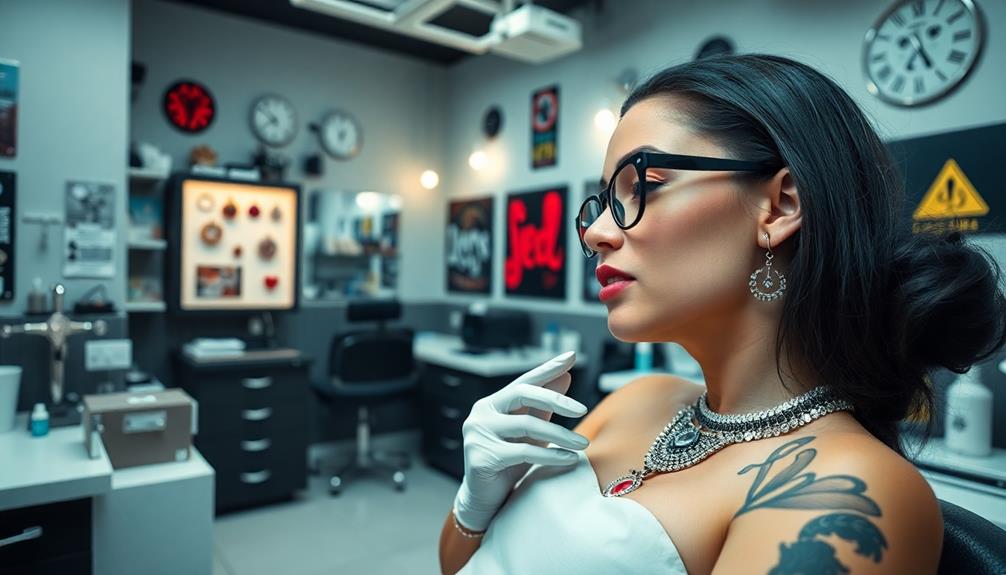
When you consider getting a body piercing, hygiene and aftercare practices are essential to prevent infections.
Choosing a professional piercer who follows strict safety standards and uses high-quality materials can make all the difference in your healing experience.
Understanding these health and safety considerations will help you enjoy your new piercing with confidence.
Hygiene and Aftercare Practices
Proper hygiene and aftercare are vital for ensuring your piercing heals smoothly and safely. Neglecting these practices can lead to infections and complications.
Start by washing your hands thoroughly before touching your newly pierced areas. Regular cleaning using a saline solution or an antiseptic recommended by your piercing studio will also minimize risks.
Here are some essential aftercare tips to follow:
- Avoid changing jewelry until your piercing has fully healed, which can take several weeks to months, depending on the body parts involved.
- Use hypoallergenic materials like titanium or surgical stainless steel to prevent allergic reactions.
- Consult your professional piercer for personalized aftercare routines to enhance the healing process.
Professional Piercing Standards
Understanding professional piercing standards is vital to guaranteeing a safe and successful experience. When you choose to get a piercing, it's important to confirm that your piercer uses sterile equipment and follows strict hygiene protocols. This helps minimize the risk of infections and complications during the process.
Before getting pierced, your professional piercer should consult with you about any allergies, medical conditions, or medications that may impact healing or the choice of jewelry materials.
Adhering to aftercare guidelines is significant for a smooth recovery; you should clean your piercings with saline solution and avoid touching or changing jewelry until it's fully healed, which can take several weeks to months depending on the piercing type.
Moreover, professional piercing standards emphasize the importance of education and training in anatomy and safety practices. This guarantees that you receive informed and responsible piercing services.
By selecting a qualified piercer who prioritizes these standards, you're not just enhancing your style but also prioritizing your health and safety.
Material Safety Considerations
Choosing the right materials for body jewelry can make a significant difference in your overall piercing experience. When considering material safety, you should prioritize options that promote biocompatibility, reducing the risk of allergic reactions and body rejection.
Here are some essential factors to keep in mind:
- Titanium: Known for its lightweight, durable nature and low allergic potential.
- Surgical stainless steel: Offers excellent corrosion resistance and is often used in professional piercings.
- Nickel-free options: Important for those with sensitivities, as nickel can trigger allergic reactions.
Proper hygiene during the piercing process is essential. Always make certain that sterile equipment and gloves are used to prevent infections.
Aftercare practices are just as important; regularly cleaning your piercing with saline solution and avoiding unnecessary touching can promote healing and minimize complications.
You should also consult professionals about the materials used in your jewelry to avoid potential allergic reactions.
Educating yourself on safe piercing practices and aftercare empowers you to maintain your health while enjoying your body modifications.
Prioritizing these material safety considerations will enhance your piercing experience and guarantee lasting satisfaction.
Future Trends in Body Piercing Fashion
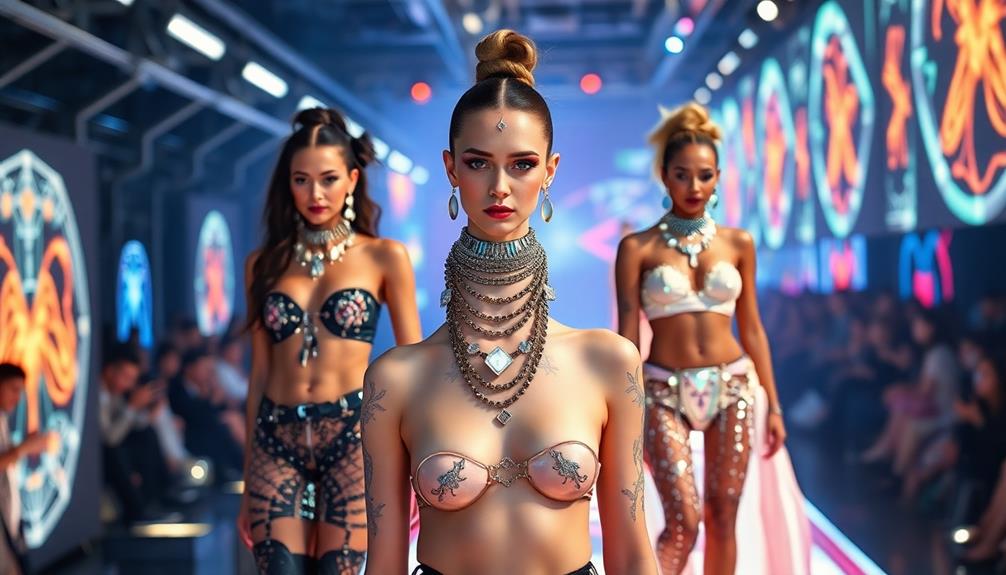
As body piercing continues to evolve, five key trends are shaping its future in fashion. The rise of body art as a fashion statement has led to exciting collaborations between designers and models showcasing diverse piercings on runways. Brands like Marc Jacobs and Alexander McQueen highlight how piercings are becoming central to their collections.
This evolution mirrors the global perspective seen in music education, where diverse expressions are celebrated.
You'll notice the growing popularity of multi-piercing configurations. Fashion influencers are promoting layered looks with earrings, nose rings, and septum piercings, making these combinations the latest trends in self-expression.
As piercings gain mainstream acceptance, bespoke and customizable jewelry designs are on the rise, allowing you to express your unique style.
Social media plays a massive role in shaping these trends. Platforms like Instagram and TikTok drive demand for specific piercings, as viral styles capture attention and influence consumer choices.
Finally, sustainability is becoming crucial in the body jewelry market. Future designs will likely reflect a commitment to environmentally friendly materials and ethical sourcing, aligning with broader values in the fashion industry.
Embracing these trends will guarantee your body art remains stylish and relevant.
Frequently Asked Questions
Why Body Piercing Is Becoming Popular?
Body piercing's popularity skyrockets because it allows you to express your individuality. Influencers showcase unique styles online, while cultural shifts toward body positivity encourage acceptance, making piercings a bold statement of personal identity and art.
What Is the Significance of Body Piercing?
You might think body piercing's just about needles and pain, but it's a profound form of self-expression. It embodies individuality, cultural identity, and even rebellion, making it a significant statement in today's diverse fashion landscape.
Are Piercings Considered Fashion?
Yes, piercings are definitely considered fashion. They enhance your personal style, reflect current trends, and allow for self-expression. With designers embracing them, you can wear piercings confidently as essential accessories in your wardrobe.
What Are Some Potential Social Impacts of Body Piercings?
Body piercings can be a vibrant tapestry of self-expression, weaving individuality into society. They challenge norms, spark conversations about acceptance, and foster body positivity, creating a ripple effect that reshapes how you view beauty and identity.
Conclusion
To summarize, body piercing isn't just a trend; it's a powerful statement woven into the fabric of modern fashion. You've seen how it reflects self-expression, influenced by celebrities and evolving styles. As fashion designers continue to embrace piercings, the possibilities for creativity are practically endless. Remember, each piercing tells a unique story, and as you explore this vibrant world, you might just find the perfect way to showcase your own extraordinary style.

